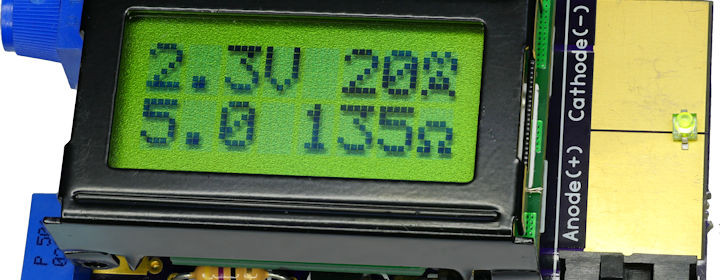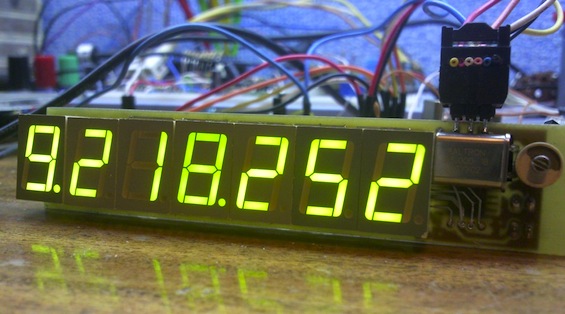Standalone LED tester

David Cook’s new handy LED tester is based on the LM317L adjustable current regulator and consists of a microcontroller and an LCD to display the forward bias voltage across the LED and required series resistance for operation at the user-specified current and circuit voltage.
Most projects include at least one LED. Before soldering the LED, how can you determine if the color and brightness meets your needs? After that, how do you calculate the correct value resistor?
Many years ago, I built a handy compact LED testing tool based on the LM317L adjustable current regulator. (You’ll definitely want to click on that link before continuing with this article.) It ended up being one of the most useful tools. In fact, the LED tester sits on a shelf above my keyboard, because I use the tester almost as often as I use my multimeter.
The problem with my original LED test tool is that I need a multimeter to measure the voltage of the LED. And, then I need a spreadsheet to calculate the resistance needed for that LED voltage with a given circuit voltage.
So, I decided to make an improved LED tester with LCD display!






